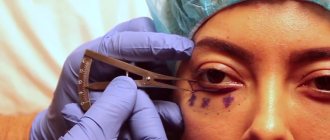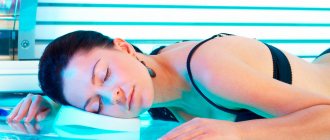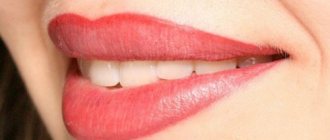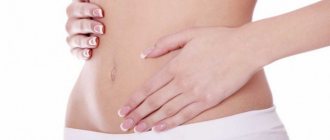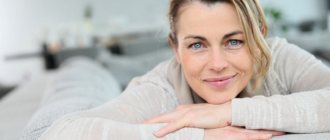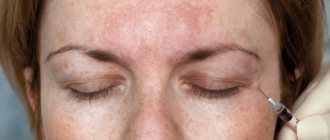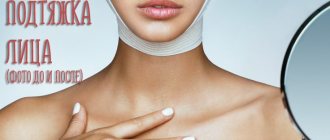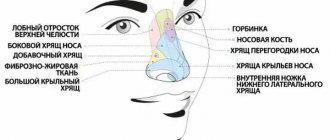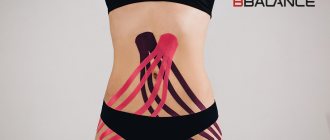One of the popular questions is how eyebrows heal after tattooing. The result of permanent makeup depends on the technique used, skin oiliness, and subsequent care. Immediately after the procedure, the color is saturated, it gradually subsides and becomes half as bright.
At first, ichor will be released, this is how the body reacts to injuries after punctures.
@mingaleeva_s
It is necessary to disinfect the dermis to avoid infection. Next, a crust appears. Dried particles must fall off on their own, otherwise the pattern will lie unevenly and scars will remain. While the dermis is healing, you should avoid visiting a bathhouse or sauna; you should not swim. The skin may become tight, then it should be smeared with a moisturizer.
After the layer comes off, the lines look pale. This is natural and the color will develop over time. Disadvantages in the form of gaps are eliminated during adjustment. Before going outside, you need to use sunscreen to prevent the paint from fading.
Typically, adjustments are required after complete healing. The pigment lasts better on dry skin. To maintain the effect of tattooing for a long time, you should avoid deep cleansing of the skin with peelings in the eyebrow area. Once the archwires are completely healed after re-adjustment, no special care is required.
Immediately after tattooing
Healing of the results obtained through permanent makeup can take up to one month. This type of exposure is called micropigmentation; dyes are injected into the subcutaneous layer with a special device with a needle at the tip. The achieved effect lasts from one to three years, but may begin to disappear earlier, under the influence of unfavorable factors. A woman can always visit a cosmetologist and carry out a correction to restore the lost brightness of the lines.
The introduction of dye into the subcutaneous layer leads to damage to the epidermis, so it takes some time for it to restore its own structure. Despite the differences in existing tattoo techniques, they are united by almost identical healing stages, which can take different times.
Immediately after the pigment injection procedure is completed, the brow ridges do not look too natural; they are very bright. Don’t be afraid of this; after 4-5 days, the process of lightening the pigment will begin, part of it will come out along with the separating ichor. That’s why the master applies a slightly larger amount than required, so as not to get an overly pale result. In addition, traumatic effects may cause tiny cuts and wounds to appear on the surface of the skin, from which blood may leak. This is an absolutely normal phenomenon and there is no need to be afraid of it.
Why you shouldn’t get your eyebrows wet after permanent makeup
A crust on the surface of the wound protects the skin from foreign viruses and pathogenic microorganisms. It cannot be peeled off until it completely falls off on its own, otherwise the pigment will not be absorbed and a scar will appear on the surface. During washing, the surface layer softens, which causes a violation of its integrity. What consequences may arise:
- infectious infection;
- intensification or resumption of the inflammatory process;
- uneven distribution of pigment over the drawing area due to excessive secretion along with the ichor;
- long-term skin restoration;
- Repeated scrapings cause scars.
The crust disappears on its own within 1 – 1.5 weeks from the date of the procedure.
If swelling increases 2-3 days after the injection of the pigment, it is recommended to consult a doctor to prescribe an antiallergic drug. Don't be alarmed if the drawing looks pale after the scab falls off. Due to the new layer of epidermis, it is difficult to see, but within 2-3 weeks the color will fully manifest itself.
How long does healing take?
How many days the recovery period after permanent treatment will take can only be said approximately. Each person’s skin has its own characteristics; for some, the healing process is more active, for others it takes longer.
There are average periods that you can focus on. In addition, there are a number of recommendations that can shorten the healing process:
- give up alcoholic drinks during the recovery period, they will thin the blood, causing its secretion;
- In the first days, lymph will be released from the wounds; it should be blotted with a sterile dry cloth;
- after 4 days, the first crusts will appear, which are strictly forbidden to be removed with your own hands, they should fall off on their own (in about a week), if you do not adhere to this recommendation, the likelihood of infection, the development of an inflammatory process, the formation of scars, and gaps in pigment increases.
The recovery period differs from the tattoo technique:
- The classic one takes a long time to heal; here the master treats the entire brow ridge.
- Powder effect involves applying pigment in a dotted manner, which gives a shadow effect. The skin will heal slightly faster.
- The hair permanent lasts a little longer than the powder one, but faster than the classic one. The entire space is not filled here, only individual strokes are created.
- Shading involves creating blurry lines using a special attachment; this type heals a little faster than the classic one.
How to wash your hair without getting your eyebrows wet
Each person has their own hair washing routine. On average, it is recommended to carry out this procedure no more than once every 4-7 days. This period would be just enough for a dry crust to form at the site of tattoo pigmentation.
But what to do if circumstances oblige you to perform hair hygiene in a couple of days, if there is ichor from a tattoo on your face? How to wash your hair so as not to wet the tattoo you just made?
The only way to do this without harming the wounds is to avoid getting moisture on your face. You should wash your hair using the method used in beauty salons/hairdressers - by tilting your head back. You can use this service in a beauty salon, or ask someone to help you at home using a shower head. Remember, it is still important not to get the tattoo area wet!
Currently, there is a selection of dry shampoos in stores that have gained great popularity when cleansing strands of bangs or finished hairstyles. The principle of their operation is to degrease the strands by spraying; such shampoo is removed from the hair by simply combing.
Pre-session activities
The speed of healing of the skin surface depends on the subtleties of eyebrow care. Don’t forget about preliminary preparation, which also has an important meaning.
General recommendations:
- it is better to choose a day for the procedure that does not fall during menstruation (at this time the pain threshold is lower, there is a possibility of active bleeding from the wounds);
- It’s better to go for a tattoo before the weekend so that swelling and redness don’t ruin your plans and interfere with going to work;
- give up antibacterial drugs, alcohol, energy drinks, blood thinners a week before the session;
- 7 days in advance, refuse to correct eyebrows with tweezers or other methods, so that the specialist examines the characteristics of hair growth and works with intact, undamaged skin;
- remove coffee from your diet in a couple of days, it reduces the pain threshold;
- The day before, you should not eat fatty, fried, or salty foods to reduce the likelihood of swelling.
Before going to the procedure, you should take a shower and wash your hair. Restrictions will be imposed on manipulations with water after tattooing. A couple of days before the procedure, an allergy test should be performed to determine the presence or absence of allergic reactions to the injected pigment.
Semi-permanent eyebrow restoration
This procedure is also effective in particularly difficult situations, when hairs are severely damaged, do not grow properly or are sparse, weakened and missing in places. During the procedure, there is no disturbance in eyebrow growth and it does not harm the surface layer of the skin. The product imitates growing hairs and is applied sequentially to problem areas.
This procedure will significantly improve the condition and appearance of the eyebrows, giving them thickness and clarity.
Using semi-permanent mascara allows you to:
- carry out water procedures, forgetting about concerns about its flushing;
- Keep bright color for a long time. Shedding is excluded;
- do not worry about an allergic reaction (hypoallergenic);
- Forget about re-dying for a long time.
First day care
Immediately after the procedure, two problems arise that should be addressed sequentially. The first is the release of the ichor; it is removed using a cotton pad or a sterile napkin.
Cauterization of wounds with aggressive alcohol compounds is prohibited.
The second problem is swelling of the skin, which is a reaction to damage to the integrity of the skin. When such a symptom appears, the use of antihistamines prescribed by a specialist is indicated.
You can use compresses from herbal decoctions (chamomile, calendula, sage, string). The main thing is to make sure that the wet cloth does not fall on the area of the brow ridges, but lies on the surface, next to them.
Stages of eyebrow healing
The stages of eyebrow healing include several days, over the course of which recommendations for caring for your own eyebrows change. The methods of the first day and after a week are slightly different.
The first day of tattooing: how to remove ichor and swelling
Immediately after tattooing, as noted above, the ichor that will appear on the surface of the eyebrows should be removed.
Do not be afraid of the excessive brightness of the pigment; after a few days it will return to normal.
The ichor (lymph) is released under the influence of the body’s protective reaction to damage. It is designed to protect the body from infection. Tattoo artists recommend wiping the surface of the eyebrows (without pressure) with a dry cotton pad at this time.
To reduce the likelihood of infection inside, use any antiseptic composition:
- Chlorhexidine;
- Miramistin.
It is recommended to carry out this effect up to 8 times a day, this will allow you to collect all the released liquid and reduce the thickness of the crust that will form afterwards.
To eliminate swelling and speed up the recovery process, wound healing compounds are used:
- Rescuer;
- Bepanten;
- D-Panthenol;
- oxolinic ointment;
- cosmetic Vaseline.
The selected product is applied with a cotton swab, after half an hour, the unabsorbed residues are carefully blotted with a clean napkin.
Second day darkening of eyebrows
Every day the eyebrow healing process will become more active. Already on the second day the swelling will be reduced and there will be no discomfort left. Now you can notice a strong darkening of the pigment, which is associated with the nightly release of ichor, which has dried up and formed a crust.
Currently, care includes the following activities:
- every 2 hours, wipe the affected area with an antiseptic solution;
- after drying, apply healing ointment;
- There is still a ban on washing with water.
To ensure that the body’s own regeneration process is more active, medications are not applied too often, trying to limit oneself to five procedures per day.
Already, a number of restrictions are imposed on a woman:
- exposure to frost, heat;
- visiting solariums, being in the open rays of the sun.
Third day, what to do with crusts
Now some people's skin is beginning to peel , which becomes a sign of activation of its protective reactions. The eyebrows actively become covered with crusts, under which itching may be felt. Getting rid of them is strictly prohibited.
Why can't you forcefully remove crusts?
- The likelihood of bleeding.
- Increased risks of infection entering the body, which will cause the development of a serious inflammatory process.
- Provocation of increased secretion of ichor, which will cause pigment leaching.
- Lengthening the processes of restoration of the brow ridges.
After the crusts cover the eyebrows, it’s time to wash your face. Now even delicate cleansers are allowed, as long as they do not contain abrasives or alcohol.
It is better to abstain from decorative cosmetics for now, and carry out the previous stages of treatment up to 5 times a day.
The period from the fourth to the seventh day after applying permanent makeup
During this period , insufficiently moistened crusts will begin to crack, and a strong feeling of itching may occur underneath them. Here you need to continue to use healing compounds, which will facilitate the slow separation of the plates from the surface of the skin.
If the itching is unbearable, you can lightly press with a clean cotton swab on the surface of the eyebrows.
During this period, antiseptics and ointments are applied no more than three times a day. By the sixth day, active removal of crusts begins; the main thing here is to restrain yourself and not try to speed up this process on your own. After the seventh day, the crusts will become thinner, the skin around may peel off greatly (this happens from prolonged exposure to an antiseptic).
Second week after tattooing color change
In the second week after permanent treatment, provided proper care is taken throughout this period, you can notice the first positive results.
- The crust is almost gone.
- Clear boundaries of the brow ridges appear.
- The eyebrow shade corresponds to the one chosen before the treatment.
Now a woman can use decorative cosmetics and face creams, trying to avoid their impact on the skin around the eyebrows. The antiseptic is applied in the mornings and evenings, and a healing cream is applied at the same frequency. Sleeping face down on a pillow is still not recommended.
Results one month after eyebrow tattoo
After actively using care products, a month later, the woman finds herself in the process of almost complete healing of the treated surface. Visually, the eyebrows will no longer change, although the restoration process itself is still ongoing inside.
Now deficiencies made by the master, or those that arose due to improper care, may become noticeable. Light gaps may appear in the eyebrows.
To correct the problems that have arisen, the woman goes to a specialist for correction. He will fill the gaps with pigment, correct the shape (if necessary), and may make changes to the eyebrow colors. If a woman is not completely satisfied with the result, she can resort to laser tattoo removal.
Changes that occur during eyebrow tattooing
The variability of the insertion depth is within 0.3 – 0.8 mm, depending on the chosen technique. Under aseptic conditions, application will not cause side effects such as infection, but it will cause discomfort. When the top layer of skin is damaged, blood and ichor are released. This provokes the appearance of swelling, redness and crusting after 2-3 days.
Proper care helps to quickly relieve swelling within a day. The wound heals within a week, but complete restoration of the skin requires at least 20 days.
During the session, after drawing a sketch, the master applies an anesthetic, which begins to act after 15 minutes. The work itself takes 1.5-2 hours, no more. At the end, the specialist applies an antiseptic solution and healing cream to the damaged skin. These substances need to treat the wound for the first few days, every 2-3 hours.
How to speed up the process
Every woman can make adjustments to the process of restoring her own eyebrows after tattooing if she follows simple rules.
- Mandatory treatment with an antiseptic solution (Chlorhexidine, Miramistin). This is necessary to prevent infection from penetrating the skin; treatment is carried out up to ten times a day, applying the product precisely.
- Use healing medications (Rescuer, Solcoseryl, D-Panthenol, Bepanten). They are needed to accelerate cellular regeneration.
- Wash your face in the correct way: during the first days this procedure is strictly prohibited, so as not to cause an infection or accidentally remove a crust. Afterwards, the use of a mild tonic, milk, but without alcohol is allowed. After the process, the face is dried with soft blotting movements of a clean towel.
- Using antihistamines to reduce swelling and inflammation.
- The use of moisturizing preparations, such as cosmetic Vaseline, will eliminate peeling and itching in the eyebrow area, which invariably occurs at the stage of scab removal.
How to wash your face without getting your eyebrows wet
Even before or immediately after tattooing, you should practice cleansing your facial skin in a new mode - without touching the intended tattoo area. Of course, this is not possible under the pressure of running water, because you cannot wet the tattoo area. It is possible to wash your face in parts, using napkins or cotton pads - this is a sure way to carry out the morning procedure and not get your eyebrows wet.
Cleansing the face during the period of rehabilitation of the lipid layer is reduced to partially wiping the skin slightly below or above the tattoo area. It is important to use a minimal amount of water and not to wet the skin.
Water procedures should be organized as follows to prevent the occurrence of high air humidity as much as possible:
- - open the doors in the shower stall,
- - Do not use a curtain in the bathroom.
The use of terry towels is undesirable; preference is given to disposable paper towels, napkins, and cotton diapers. In addition, it is also advisable to change your body towel every day.
It is possible to wash your face without getting the area of pigmentation wet if you are careful!
What not to do
In order for the recovery period to pass as quickly and comfortably as possible, it is not enough to completely follow the care recommendations of the cosmetologist. It is important to strictly follow his advice regarding everyday life.
A cosmetologist, after a tattoo, establishes the following prohibitions:
- touch the brow ridges with your hands, there is a risk of infection. All medications are applied only with clean cotton swabs;
- sunbathing in open sunlight or in a solarium, eyebrows may turn pale and the pigment will be unevenly distributed;
- visit a sauna, bathhouse, swimming pool, where there is high humidity, which increases the risk of contracting an infection and prolonging the recovery process;
- for the first three days, drink alcoholic beverages, which thin the blood and promote the release of pigment along with lymph;
- use peelings, scrubs, and other aggressive cosmetic products;
- Apply decorative cosmetics to the eyebrow area. Cosmetics can penetrate into open wounds, which will provoke the development of an allergic reaction;
- If an infectious process occurs, you should immediately seek treatment from a doctor, otherwise, pus will begin to be released, which will be a sign of bacteria entering the blood. This is dangerous not only for the appearance of the brow ridges, but also for the woman’s health.
Properly performed tattooing only gives half the result. The speed of healing of the skin, as well as the effect achieved, depends on how correctly a woman follows care measures during the recovery period.
